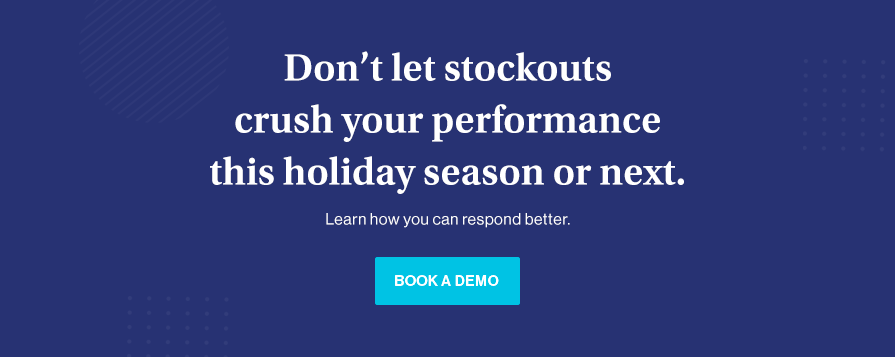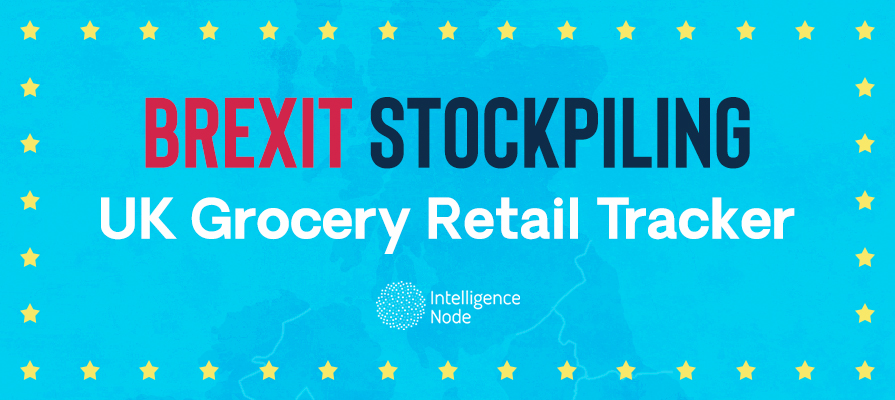Inventory Optimization Techniques to Avoid Out-of-Stocks & Excess Inventory Costs
Content Summary :
What are Stockouts and Overstocking and Why Monitor Them?
The True Business Cost of Stockouts & Overstocking
Balancing the Trade-Offs between OOS & Excess Inventory
3 Common But Preventable Causes of Stockouts
Solve Inventory Problems Before They Become a Problem
We don’t need to stress the importance of understanding product demand. For eCommerce businesses, the real challenge lies in not dropping the ball when it really matters. With the discount season fast approaching, your reputation will depend on how well-equipped you are at responding to product stockouts. After spending thousands of marketing dollars to convert browsing into intent, the worst-case scenario for an eCommerce business would be losing customers to other stores at critical shopping events such as Cyber Monday or Holiday sales. Holding inventory can be expensive, especially for leaner retail businesses, but imagine spending all that dough just to pass on your hard-earned customer to the competition!
In this blogpost, we have compiled fool-proof inventory best practices to help you manage and overcome stockouts, reduce excess inventory, and avoid lost sales.
What are Stockouts and Overstocking and Why Monitor Them?
Before we deep dive into best practices to foolproof your inventory and optimize stock levels, let us first understand what stockouts and over stocking really mean when it comes to your online inventory. Stockouts basically mean exhausting your inventory for products that are still listed on your website and are in demand by your customers. Untimely stock outs can directly impact your sales and ruin the experience of intent shoppers who come looking for a specific product on your website – driving them to your competitors. On the contrary, overstocking can be defined as having excess inventory for products that are not in demand, leading to locked-in capital, wastage of storage space, increased inventory holding costs and unnecessary losses (especially when you are dealing in fast-fashion that loses relevance or products with limited shelf life that have to be discarded).
The True Business Cost of Stockouts & Overstocking
This pandemic has revealed the real costs associated with inventory mismanagement. According to a study, inventory distortion produced losses totalling $818 billion globally in a year, 52% of which was attributed to out-of-stocks and the remaining 44% to overstocks. On a store level, this translated to $580 million in losses. The impact of mismanaged inventory is expected to be felt more acutely during and after holidays and major sale events.
The Real Breakdown of Costs:
Stockouts
- Expedited Freight Costs: Fees to restock and rush delivery
- Lost Business: Sales from customers going to other retailers or cancelled orders due to late delivery
- Employee Overtime: Paying employees to handle irate customers, handle late deliveries and unplanned restocks, and work on holidays to meet extra demand
- Low Returns on Promotional Dollars: Promotions increase the likelihood of stockouts and give negative returns
- Total Cart Abandonment: Loss in sales from customers leaving other products in their basket to avoid shipping fees and save time
Overstock
- Storage and Holding Costs: Cost of storing, insuring and moving products to and from warehouses
- Inventory Damage: About 2-3% of retail inventory is lost to damages and product expiry
- Disposal Costs: Business and environmental costs of liquidating inventory
- Cost of Money: Funds borrowed to procure and maintain extra inventory and not invested for business growth
Balancing the Trade-Offs between out-of-stock (OOS) & Excess Inventory
Different retail models come with different considerations for laying down an optimized fulfillment strategy. Inventory managers must factor each of these points into their planning system:
- Risk appetite
- Replenishment capabilities
- Capital to endure inventory holding costs
Pro Tip: Improve your conversions within days of implementation.
Calibrate stock availability in response to real-time product performance in your market.
Learn More
If your historical sales demands are strong and the unit margins on your products are much higher than unit costs, it may be advisable to err on the side of over-ordering. If your retail business is dependent on high-volume buyers and repeat orders, it makes sense to have a nice cushion of ‘safety stock’ in place. If your business model is such that the sales of one product could unlock additional revenue streams from complementary products and services, you must account for such anticipatory demand.
On the flip side, retailers selling high-value or perishable goods will benefit from a JIT (Just in Time) or drop-shipping system. Prudent demand estimates are critical when dealing with high storage costs relative to net margins. If your product is a unique offering or a luxury that does not have easily available or replicable alternatives, tight supplies could work to your advantage.
Understanding which category your products fall into can make all the difference. In 2001, Nike implemented a new demand planning system that led to more than $100 million in lost sales. A surplus of slow-moving designs and completely out-of-stock Air Jordans across the globe were linked to the gross miscalculations in planning its short and mid-range sneaker inventories. This serves as a cautionary tale for online retailers to this day. Invest in tried and tested technology to minimize costly allocation mistakes.

You cannot anticipate or plan for disrupted supply chains and trade embargos. However, the most common inventory mistakes are preventable and within the retailer’s power to fix:
- Inaccurate Data: Poor demand planning stems from incomplete and inaccurate market insights and historical sales data. Make sure you have a 360° view of retail trends and product performance. With real-time category movements and competitive intelligence, you can detect OOS patterns and plan ahead with far greater accuracy. Further, good AI-powered demand forecasting solutions are now able to pinpoint demand fluctuations at a granular level for specific product features, sizes, or even delivery zones.
- Siloed Channels: Integrated data across all your sales channels, both online and offline ensure that all your catalog is in sync and you have great flexibility moving stock availability from one retail platform to another. This also provides better data sharing opportunities between POS, marketing, purchasing, and fulfillment teams so you can save your customers from the terrible disappointment of ordering products that you don’t really have in stores or warehouses. An integrated inventory management software can help reduce backorders and emergency inventory reallocations significantly.
- Re-order Delays: Our clients often struggle with situations where they are only made aware of depleting stocks when it’s too late. Often, re-order points are not configured with realistic supplier lead times in mind. Further, lead time demands (product demand in the period between placing an order or reordering and getting the product in-store) are rarely factored while placing orders. Getting low-inventory alerts, not just for your stock but also for your competitions’, can be especially helpful when it is well-timed.
In the past year, manufacturers have suffered the most from inventory distortions. The supply chain imbalance caused greater losses for manufacturers ($670 million) than it did for supply chain and retail businesses. If you are a DTC brand or a manufacturer selling through external retail partners, having accurate demand forecasts is especially critical because you do not have the option to pivot to other products, cut down orders, or switch vendors easily. You can eliminate some of these blind spots and meet consumer demand with near-real-time response to market trends using an advanced inventory planning system like ours.
Solve Inventory Problems Before They Become a Problem
Predicting potential stockouts is a tricky business. Legacy inventory management platforms do a good job of accounting for stock at an individual store level. The modern eCommerce business, however, is not so straightforward anymore. Most online retailers have to deal with multiple channels, retail partners, global supply chain issues, and ephemeral consumer trends. Your business needs an integrated system that pulls in data from all your sales channels, fulfillment centres, competitive websites, and market insights to sync your inventory with true demand.
With advanced analytics and sophisticated forecasting algorithms like Intelligence Node’s AI-powered solution, you can stay on top of critical inventory insights:
Track sales velocity
Boost your inventory replenishment process with foresight on ‘Days until Stockout’. Sales velocity for individual products can help you predict reorder points ahead of time, based on how quickly the items are flying off your (and the competition’s) virtual shelves. Keep an eye out for deals on products that are in high demand during certain times of the year.
Track daily inventory levels and depth of inventory
Assign optimal inventory level and depth target without the need to manually count inventory across stores and channels. Use inventory management software to automate these tasks.
Use Machine Learning for demand forecasting
Empower your purchasing teams with sophisticated algorithms to build demand forecasts. Leveraging big data sets and historical patterns cuts the pointless guesswork out of inventory planning.
Our team of experts has worked with retailers of all shapes and sizes to minimize out-of-stock events, inventory holding costs, and liquidation with the right tools. Get access to insider tips on inventory management, dealing with stockouts, and reducing inventory waste.





